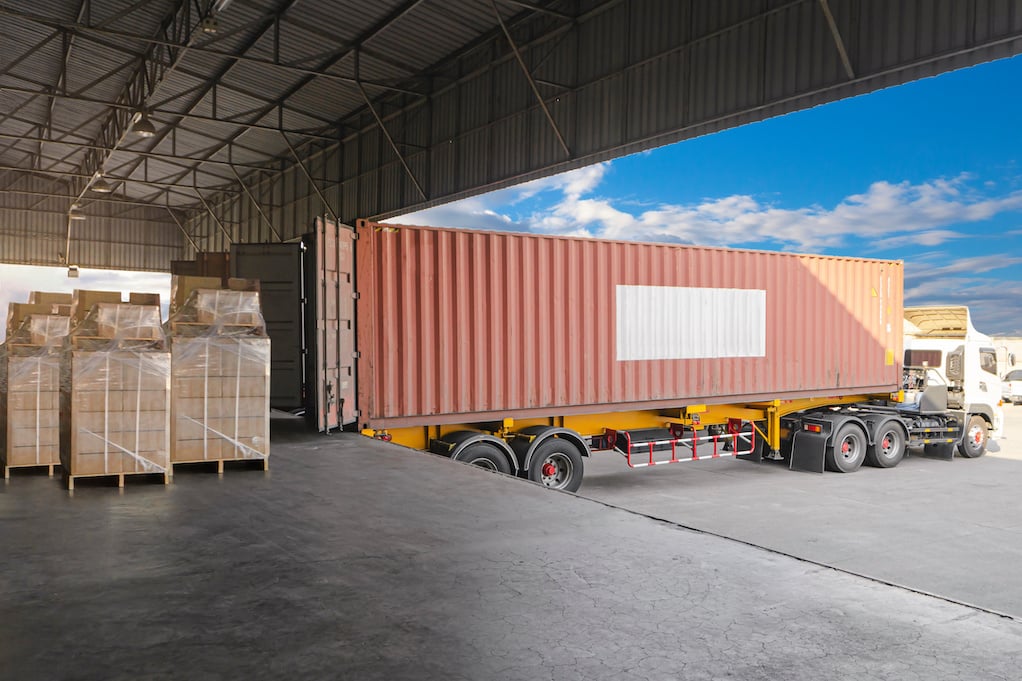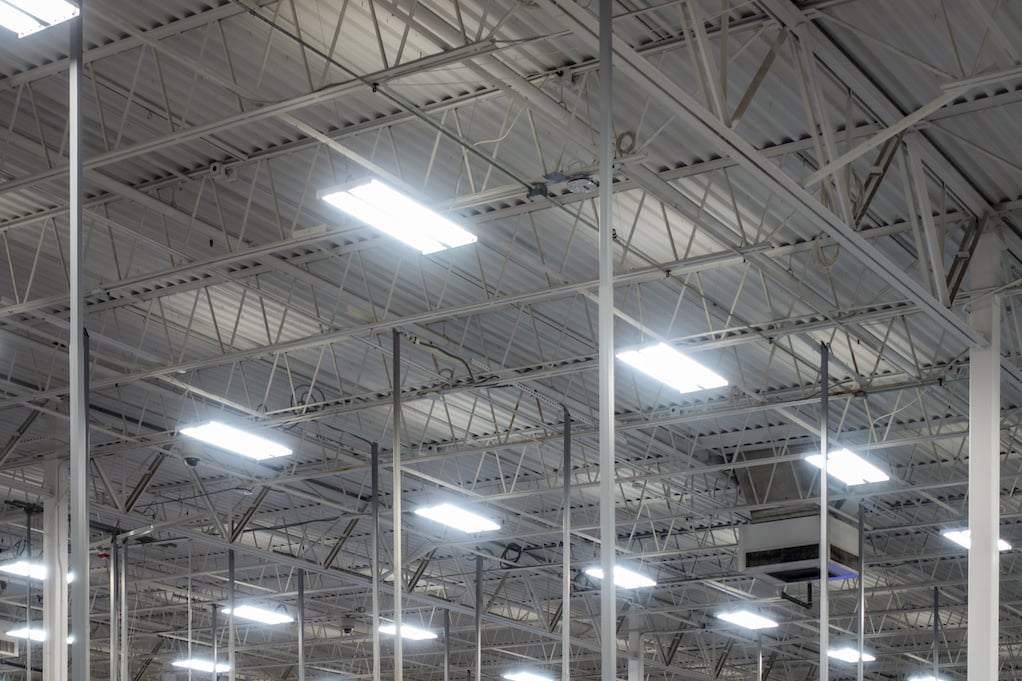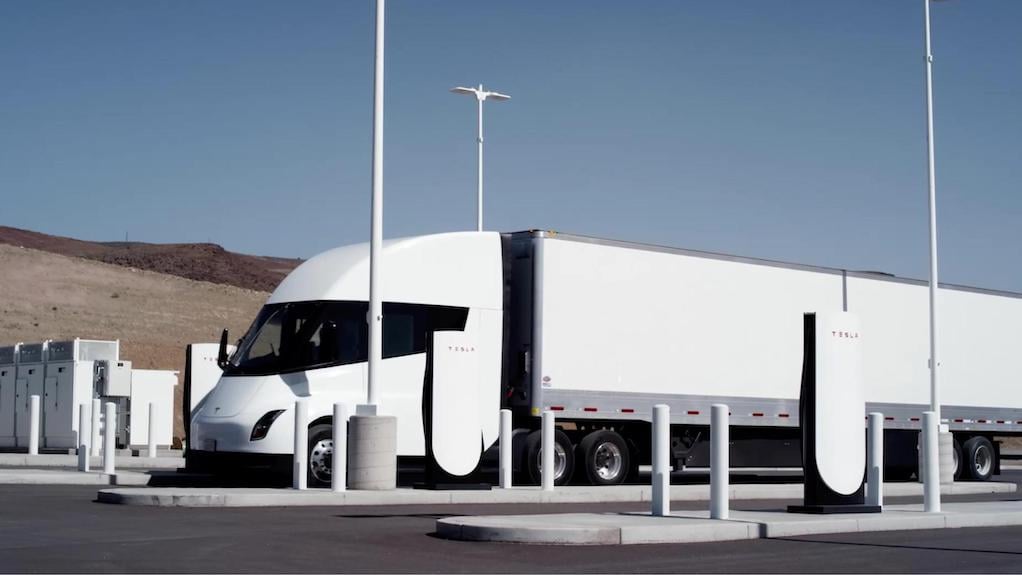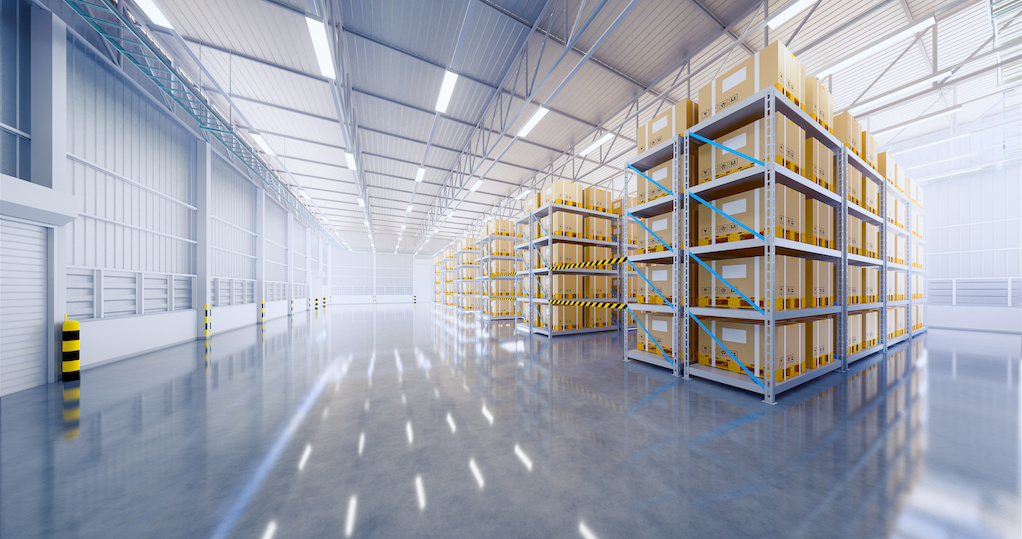Warehouses and distribution centers have become increasingly important in the commercial sector due to the surge in supply needs and the continued growth of e-commerce. As a result, they have become critical to supply chains, distribution networks, and the resilience of communities.
Moreover, they provide a valuable opportunity for decarbonization. Because as the world moves towards a more sustainable future, businesses are increasingly looking for ways to reduce their environmental impact while also saving on operational costs. And since industrial properties represent a large breadth of building emissions, the evaluation of energy efficiency in warehouses is currently in the spotlight.
There are several factors that contribute to the energy efficiency of an industrial property. These include the building's design and construction, the type of lighting and heating systems used, and the efficiency of any machinery or equipment that is in use. Learn the methods tenants can implement starting now to drive down energy costs while becoming more efficient.
Building Envelope and Design
One of the first things to consider when evaluating the energy efficiency of an industrial property is the building's design and construction. Buildings that are designed with energy efficiency in mind, such as those with insulation, high-performance windows, and other features that reduce energy loss, will be more energy efficient than those that are not. Additionally, properties with an efficient building envelope, such as a cool roof and properly sealed doors and windows, can save on heating and cooling costs.
|
Warehouses face a unique challenge in achieving energy efficiency compared to other types of businesses. |
Loading bays are a significant source of energy loss, as they provide a large opportunity for heat and cold to escape or enter the building.

This energy loss is caused by a number of things, including weather stripping or worn-out dock and hinge seals, an incorrect R-value for the material used for the dock door, inadequate insulation in the dock walls nearby, and a lack of or improper installation of air curtains. In many cases, poor airtightness around dock bays is worsened by failing to follow energy-efficiency best practices, such as leaving dock doors open for extended periods or neglecting to maintain the dock door seals.
Achieve this by replacing or repairing caulking/weather stripping around doors, windows, and other openings to the outside of the building can help reduce air leakage and improve insulation, resulting in reduced heating and cooling needs.
It is also important for commercial tenants to ensure that wall and roof insulation is appropriate for the local climate. Depending on your environment, your requirements for roofing and other facilities will vary, read more about Finding the Right Roof for Your Warehouse.
Lighting
The type of lighting and heating systems used in an industrial property also plays a significant role in energy efficiency. Lighting systems that use LED or fluorescent bulbs are more energy-efficient than those that use incandescent bulbs. Occupancy sensors can also be installed to limit illumination of unoccupied areas, which can save a significant amount of energy over time. Installing controls to allow dimming or bi-level switching of lights and photosensors to control outdoor lighting can also help to reduce energy usage and costs. These measures allow for more precise control of lighting levels and prevent unnecessary energy consumption.

One such measure is to replace metal halide and/or T12 fluorescent lighting with T5 or Super T8 linear fluorescent fixtures and high-efficiency ballasts. These lighting solutions are much more energy-efficient and provide better light quality, while also reducing maintenance costs in the long run. If metal halide lighting is used in unconditioned warehouses with extreme temperatures, it's recommended to emphasize the use of ceramic metal halide bulbs with electronic ballasts for maximum efficiency.
In addition to controlling the use of lighting, commercial tenants can also investigate opportunities for sky lighting to reduce the artificial lighting requirements. This not only reduces energy usage but also provides natural light, which can improve the overall work environment and employee well-being.
While we are just touching on necessary warehouse specifications, know that there's a lot other factors to consider to find and operate the perfect warehouse. Learn the 70+ points commercial tenants should know in the free course below.
Heating
Regular maintenance of HVAC systems is also important to ensure optimal performance and energy efficiency. This includes replacement of filters and reviewing temperature setpoints and making seasonal adjustments. Controlling outside air intake and avoiding heating/cooling outside air when the building is unoccupied can also help reduce energy waste.
Another important step is to ensure that exhaust fans are shut off when the building is unoccupied. This can help reduce energy consumption and costs. Similarly, confirming that bay doors are closed when not in use and programming the defrost cycle to when needed, rather than relying on timers, can also contribute to improved energy efficiency and reduced costs.
Heating systems that use high-efficiency boilers or furnaces are also more energy-efficient than those that use older, less efficient systems. So, if you're looking for new space, never forget to consider the age of the existing HVAC system.
Machinery
Another key factor in the energy efficiency of an industrial property is the efficiency of any machinery or equipment that is in use. Machinery and equipment that are regularly maintained and operated in an energy-efficient manner can significantly reduce energy consumption and save on operational costs.
And one of the most common ways CRE spaces are phasing in energy-efficiency is by utilizing machinery powered by electric. For example, electric forklifts and pallet jacks, can greatly reduce energy use and emissions compared to traditional gas-powered equipment.
But as the technological revolution rapidly persists, we may be seeing a future where industrial spaces are supported by electronic vehicles and trucks. This will demand new features, substantial energy requirements, and renovation but they have the potential to drive up a company's productivity while evaporating its carbon footprint. Learn more about electronic vehicles in warehouses: Is Your Warehouse Ready for the Tesla Semi-Truck?

One way to evaluate the energy efficiency of an industrial property is to conduct an energy audit. An energy audit can identify areas where energy is being wasted and recommend solutions to improve energy efficiency. A qualified energy auditor can provide a detailed report on the property's energy usage and make recommendations for energy-saving improvements.
Phasing in Energy Efficient Technology
The future of sustainable commercial buildings is quickly evolving, and along with it so are building owners’ expectations to remain up-to-date. As such, the pressure to lease LEED or other environmentally- certified buildings is mounting.
Of course now, many property owners are installing renewable energy systems, such as solar panels or wind turbines. These systems can generate clean energy on-site and reduce the property's reliance on traditional energy sources. While these projects are associated with a hefty initial price tag, they are expected to reduce operational costs over time while improving energy efficiency.
|
“Buildings that are LEED certified have reported nearly 20 percent lower maintenance costs than similar, non-LEED buildings, while green retrofits generally decrease operation costs by almost 10 percent in one year.” -U.S. Green Building Council (USGBC) |
But keep in mind that the data source is the board that created LEED certification.
By reducing energy consumption, businesses can reduce their carbon footprint and contribute to a more sustainable future. But, going forward commercial tenants and landlords may have no choice to adopt new sustainable technology, learn about the new green standards that are expected to be phased into CRE in the next few years (and the consequences from not adopting). How Corporate Tenants Can Protect Their Budget Against Green Restrictions.
Work With a True Tenant Rep™
Working with a true tenant representative can be a valuable asset in evaluating the energy efficiency of an industrial property. Tenant reps can provide expertise on energy efficiency and recommend solutions that can save on operational costs and reduce environmental impact. They can also negotiate with landlords to ensure that the property meets energy efficiency standards and that any improvements are made at the landlord's expense.
A True Tenant Representative™ can offer more than just pinpointing areas where you may face increased costs. They can also provide assistance in ensuring that you stay in compliance with LEED certification requirements. A True Tenant Rep™ can skillfully negotiate lease terms that allocate responsibility for any expenses related to maintaining certification. Furthermore, a True Tenant Rep™ can safeguard your interests in lease agreements by identifying and negotiating advantageous lease terms. Our unique position of solely representing corporate tenants allows us to achieve these results.
Evaluating energy efficiency in industrial properties is an important consideration for businesses that want to save on operational costs and reduce their environmental impact. By considering the building's design and construction, lighting and heating systems, machinery and equipment, and conducting an energy audit, businesses can identify areas for improvement and implement energy-saving solutions. Working with a True Tenant Rep™ can also provide valuable expertise and guidance in this process.









